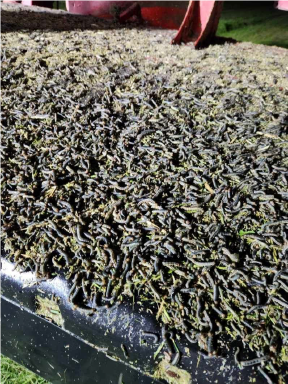The true armyworm populations that I have been watching at the SWROC are declining. That is not true in all areas.

Similar to grasshoppers, it usually works best to detect and treat large armyworm populations in grassy areas before they move into nearby corn and cereal crops.
Armyworms can destroy a cutting of hay or grazing- a particular concern in dry years.
Most of the feeding occurs in less than two weeks of the armyworm’s larval life. Dry conditions reduce forage grass growth and armyworm larvae will deplete foliage and the larger, harder-to-kill larvae will move to nearby crops.
So you cut grass hay and found an armyworm army and an insecticide is no longer an option. Now what? The larvae will feed in and under the swath and often move once the drying grass becomes less palatable. Armyworms on the march can cover some long distances overnight. Watch nearby corn and cereals. If I would leave a bale full of armyworms sit in the field for a bit.
True armyworms feed on grasses and broadleaf crops such as soybeans and alfalfa are usually safe. I have seen armyworms clean the grass weeds out of sunflower and soybean fields as they march through. Soybeans are occasionally attacked by starving armyworms trapped inside weedy fields or late-removed rye covers.
For more information see: https://blog-crop-news.extension.umn.edu/2023/06/remember-to-scout-armyworms.html and https://extension.umn.edu/corn-pest-management/armyworm
There is still alfalfa weevil larval activity in areas of Minnesota.
Remember to account for blister beetles in 2nd and third cutting alfalfa in areas that have experienced high grasshopper populations the past few years. For more information see: https://blog-crop-news.extension.umn.edu/2021/08/blister-beetles-in-alfalfa-hay.html
As always, your mileage may vary!
Happy trails,
Bruce
